[kimitaku]
January 28, 2014 09:00
This is an introduction of the city walk map.
These six maps are issued by the Chuo-ku Tourism Association, Chuo-ku Shopping Street Federation, and Chuo-ku.
If you pick it up and arrange it, you will be introduced to Chuo-ku with six pieces.
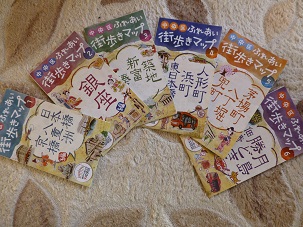
It is made with a gentle color that makes you want to take it in your hand and carry it around.
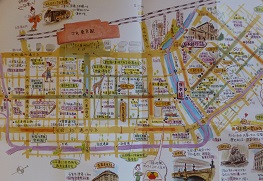
The first one.
This page is located near Nihonbashi Kyobashi from Tokyo Station.
Each of the historic shopping streets is listed, and its main events are also written.
The second one is around Ginza, and the third one is near Tsukiji.
There is also a huge map at the "Platto Tsukiji" information center outside the construction area.
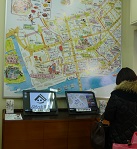
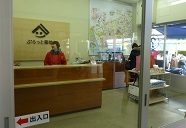
The fourth one is around Ningyocho Hamacho and Higashinihombashi. The fifth one is Hatchobori, Kabuto-cho, and Kayabacho.
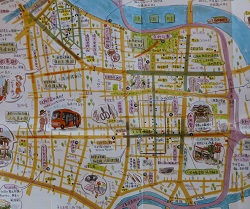
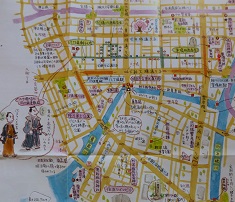
In the shopping streets around Hatchobori, there are many divisions from Edo, and the shopping streets seem to remain the same as the old divisions.
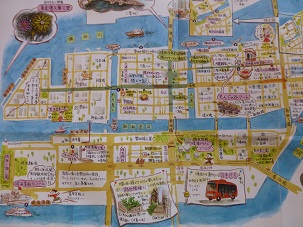
The sixth one is Tsukuda, Kachidoki, Tsukishima and Harumi.
Chuo-ku, which can be seen from this map, is surrounded by many canals and rivers, and seems to be a city of water.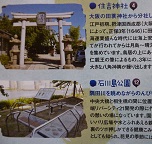
Why don't you take a walk around Chuo-ku with the "Fureai Town Walking Map" in one hand on the day off?
The map seems to be limited. As soon as possible. It is provided for the ward office, branch office, and Chuo-ku Tourism Association.
[Tachibana]
January 15, 2014 14:00
Every day, people tend to stay at home due to the cold, but if you take a stroll on a sunny day, how about the Hamacho Ryokudo?
"Hamacho Ryokudo" begins opposite the exit of Hamacho Kiyosubashi in the capital city.
If you dive through an arched tunnel, you will find an almost straight green road sandwiched between roads on both sides.
This is a green road built by reclaiming the place where the Hamacho River (also known as the "Midori River" from the name of the bridge that was built) used to flow.
As you walk north, you will encounter amazake Yokocho, where you will find a statue of Benkei Musashibo, famous for its Kanjin Book (the place where one of the treasure chests of Chuo-ku last year's treasure hunts was located).
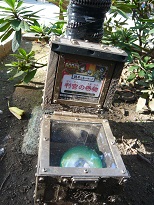
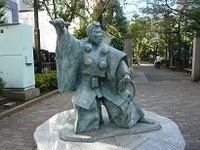
If you go further, there is a monument near the entrance on the north side of the "Place of Rehabilitation of Chinese Medicine".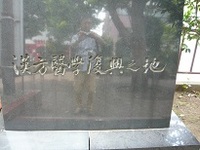
Exit this mouth and pass by the side of the Nihonbashi Fire Station Ningyocho Sub-Branch, and you will come to "Konza-dori" connecting the Hisamatsucho Intersection and Ningyocho Intersection.
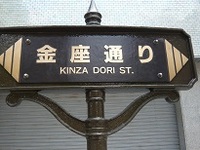
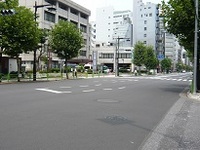
"Koganza-dori" was built to cross the Hamacho River.
And just on the other side of "Konza-dori", there is a monument of "Ogawa Bridge Origin" along with Hisamatsu Police Station.
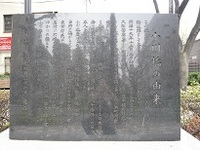
The origin of Ogawa Bridge is that a pistol robbery occurred in Bakurocho in December 1886, and a culprit discovered near Tachibana-cho (currently Higashi-Nihonbashi 3-chome) by Hisamatsu Police Station Ogawa on the way to rushing and seriously injured He was tracked to the banks of Hamacho and caught the man. The criminal had 80 exils, and five were violent criminals killing people.
However, inspector Ogawa (2nd grade advanced due to his arrest) died two years later due to the wound at this time. Therefore, we regretted the precious death of the assistant inspector, named the bridge next to the Hisamatsu Police Station Ogawa Bridge, and decided to leave the immortal achievement for future generations.
I often heard this story from my grandparents born in the Meiji era, but I am a little surprised that there was a violent crime of pistol robbery (although he had even a sword) in Meiji period, but I thought that the bravery of policeman Ogawa who confronted this violent crime alone would have been a great officer for children.















